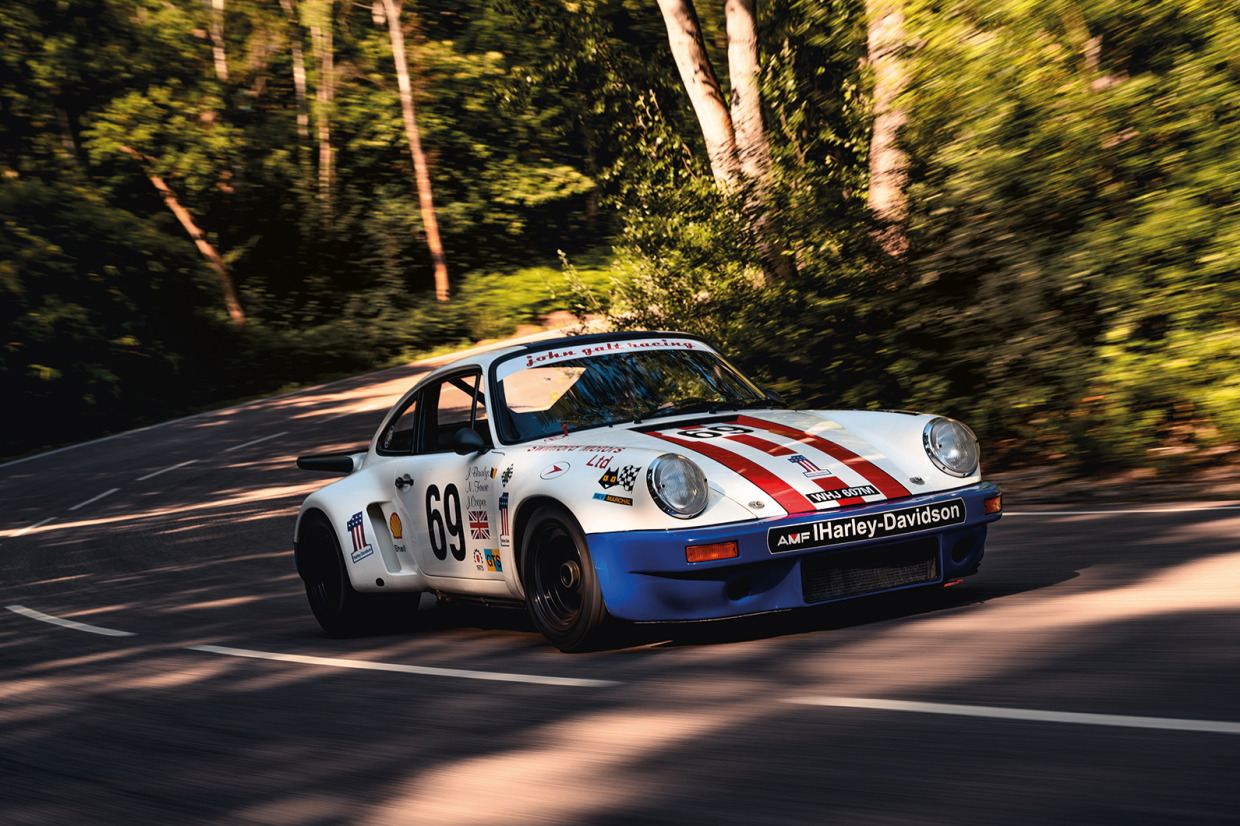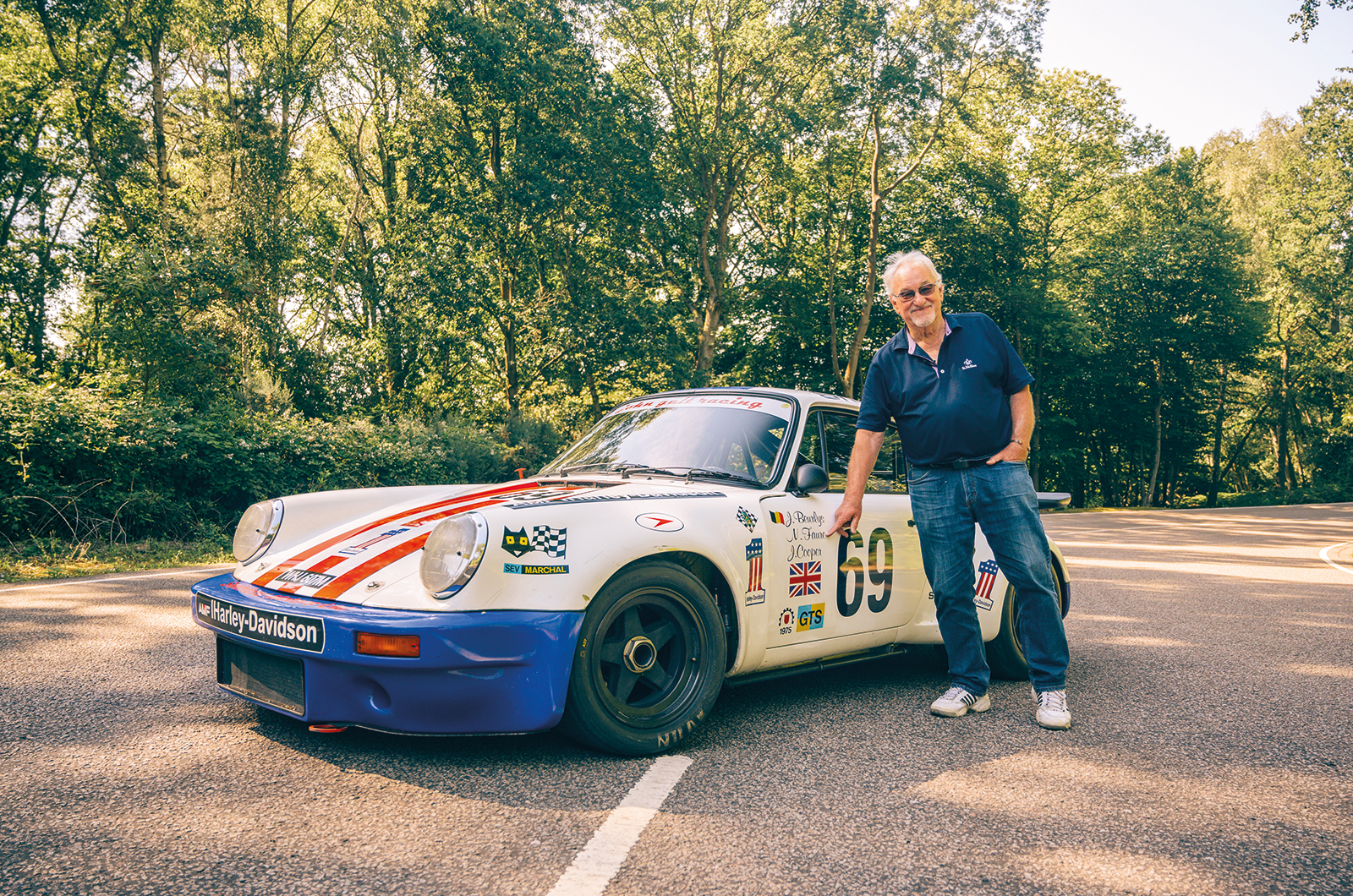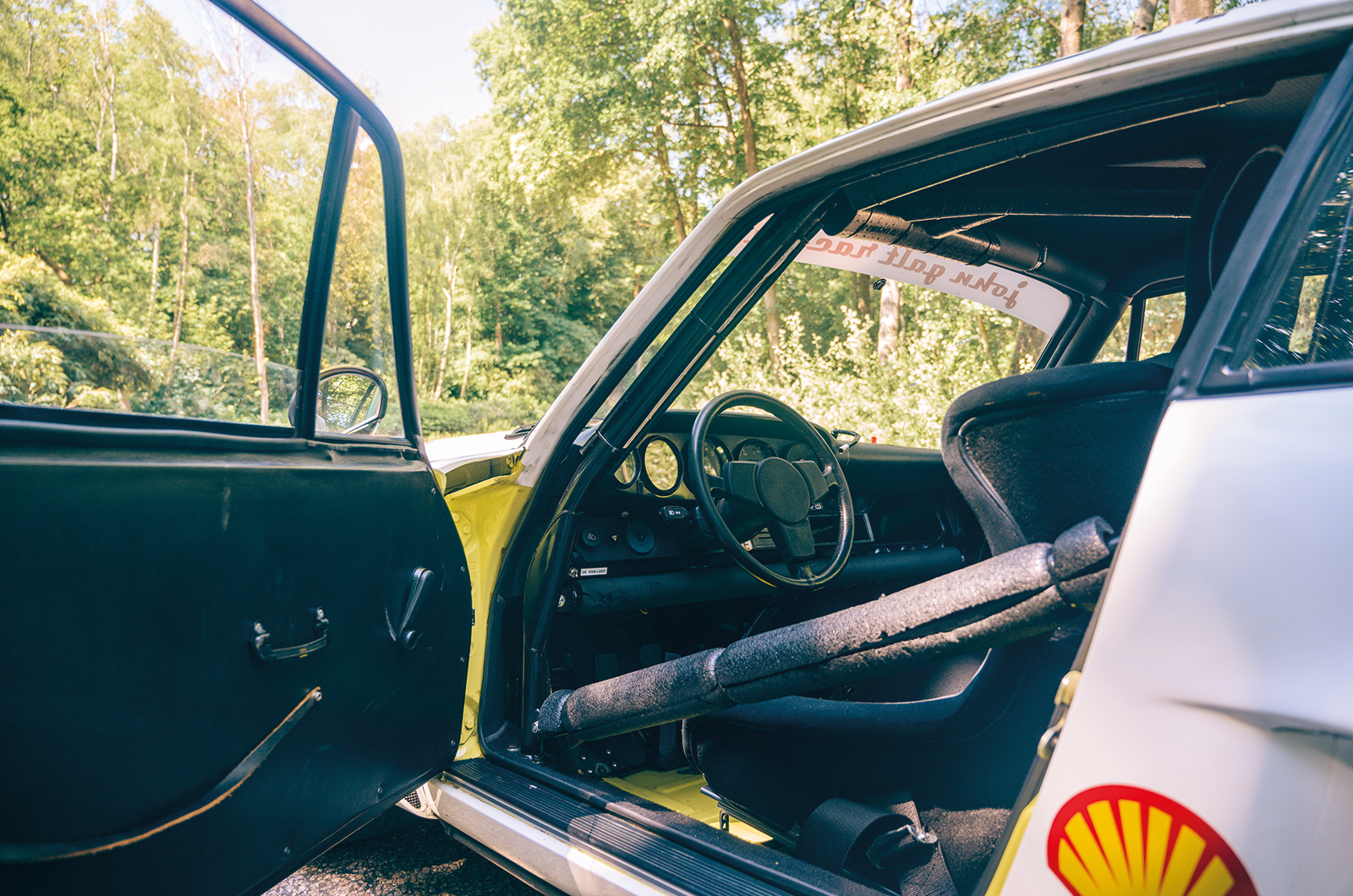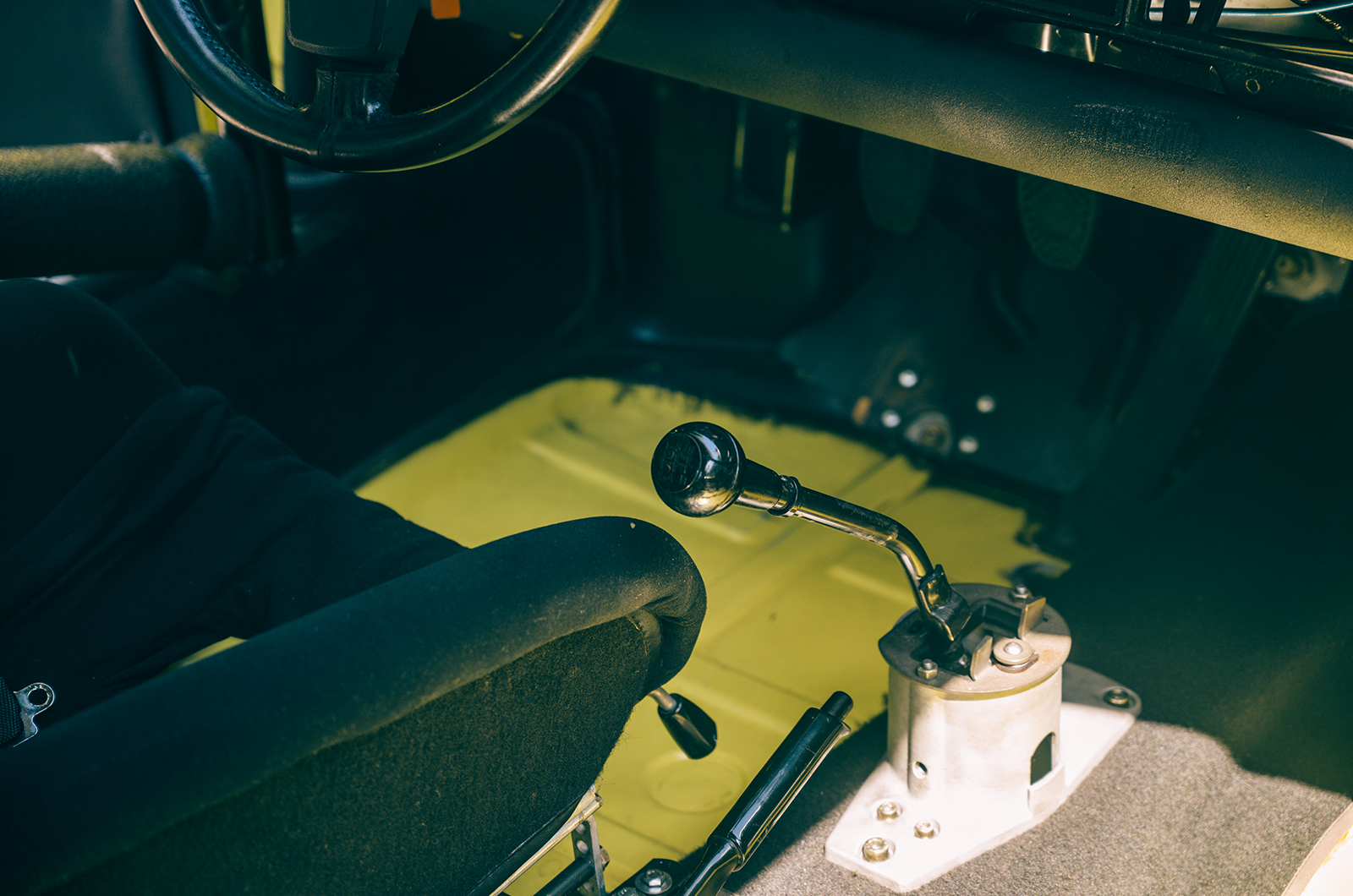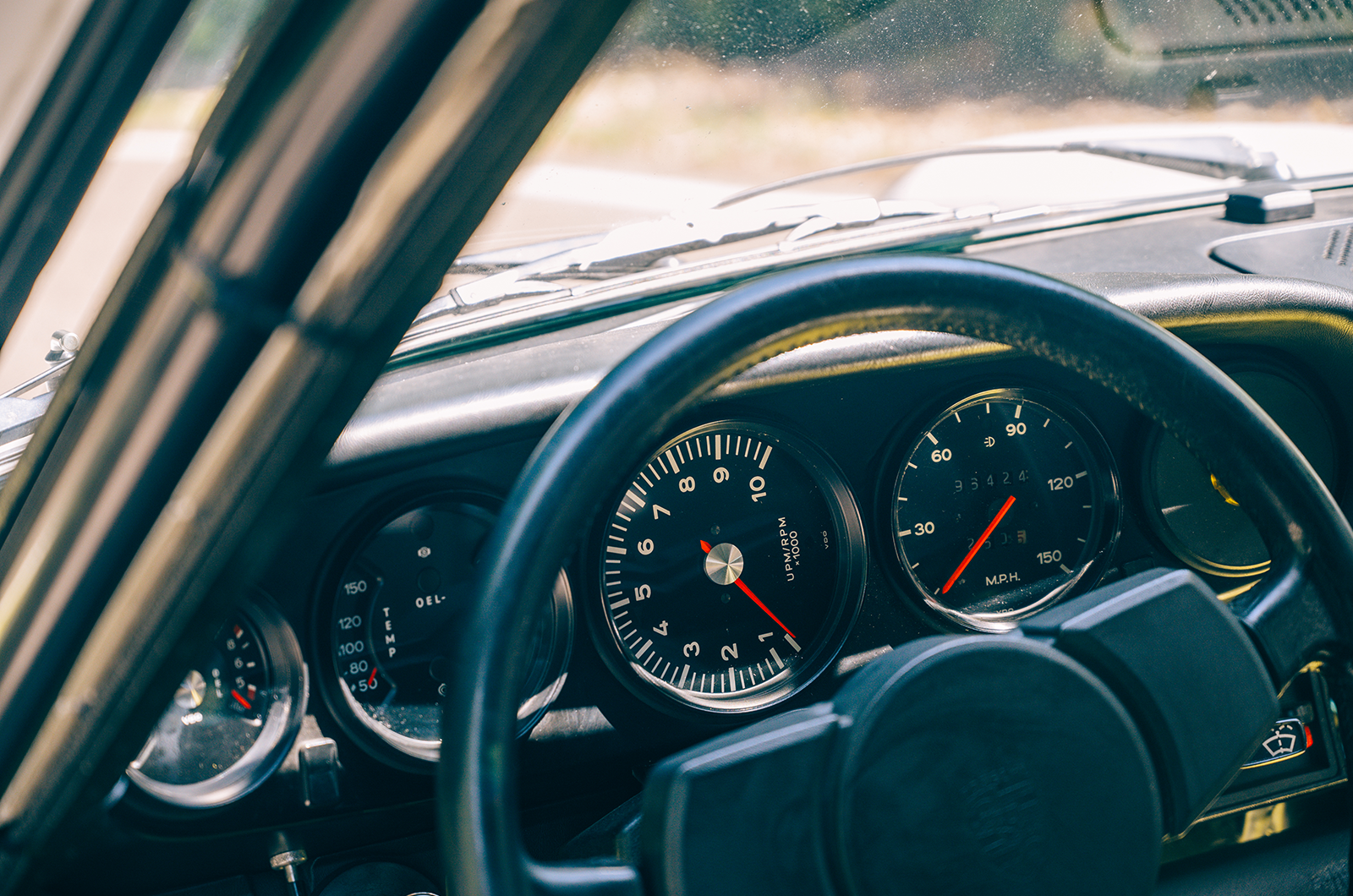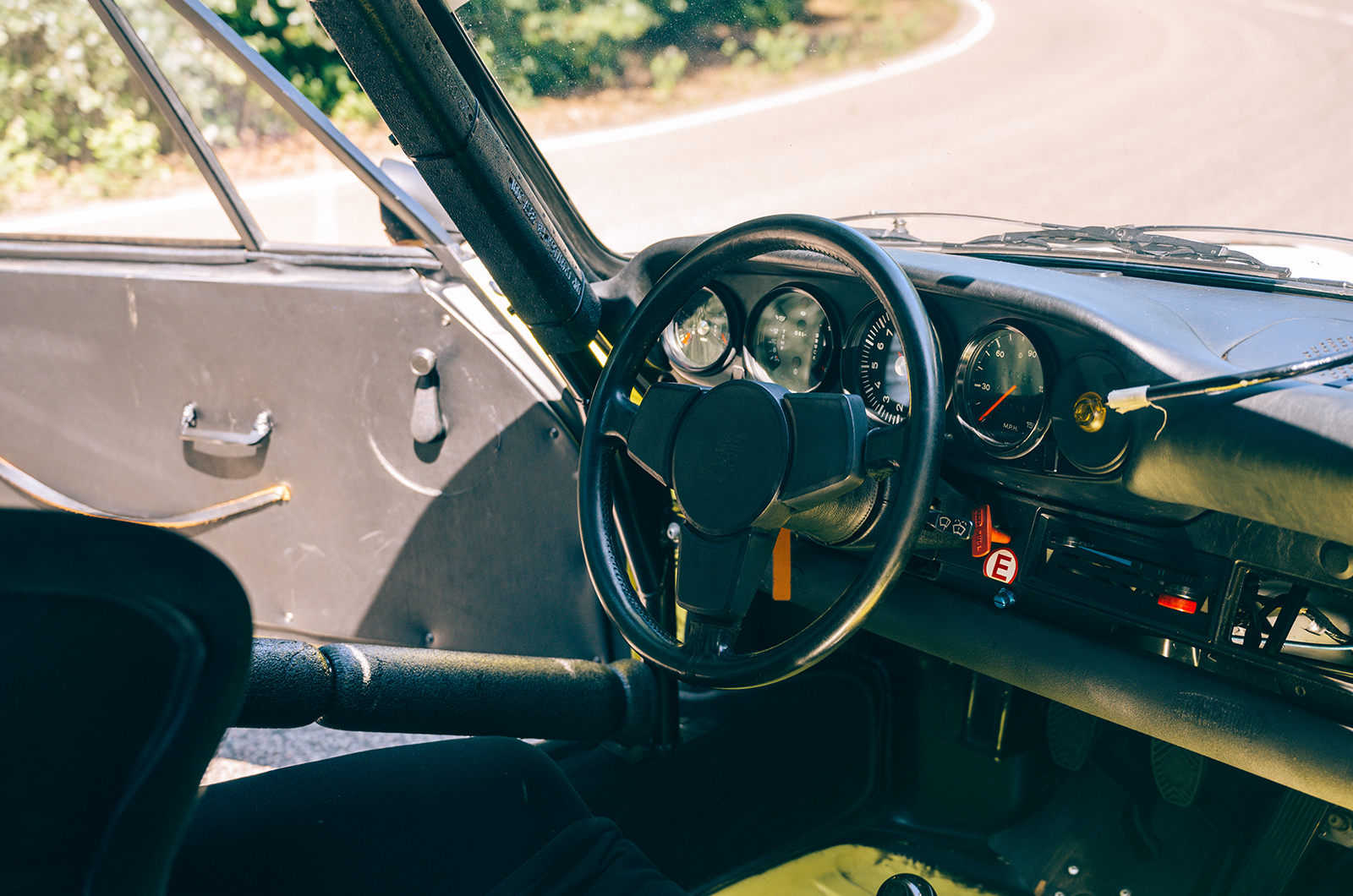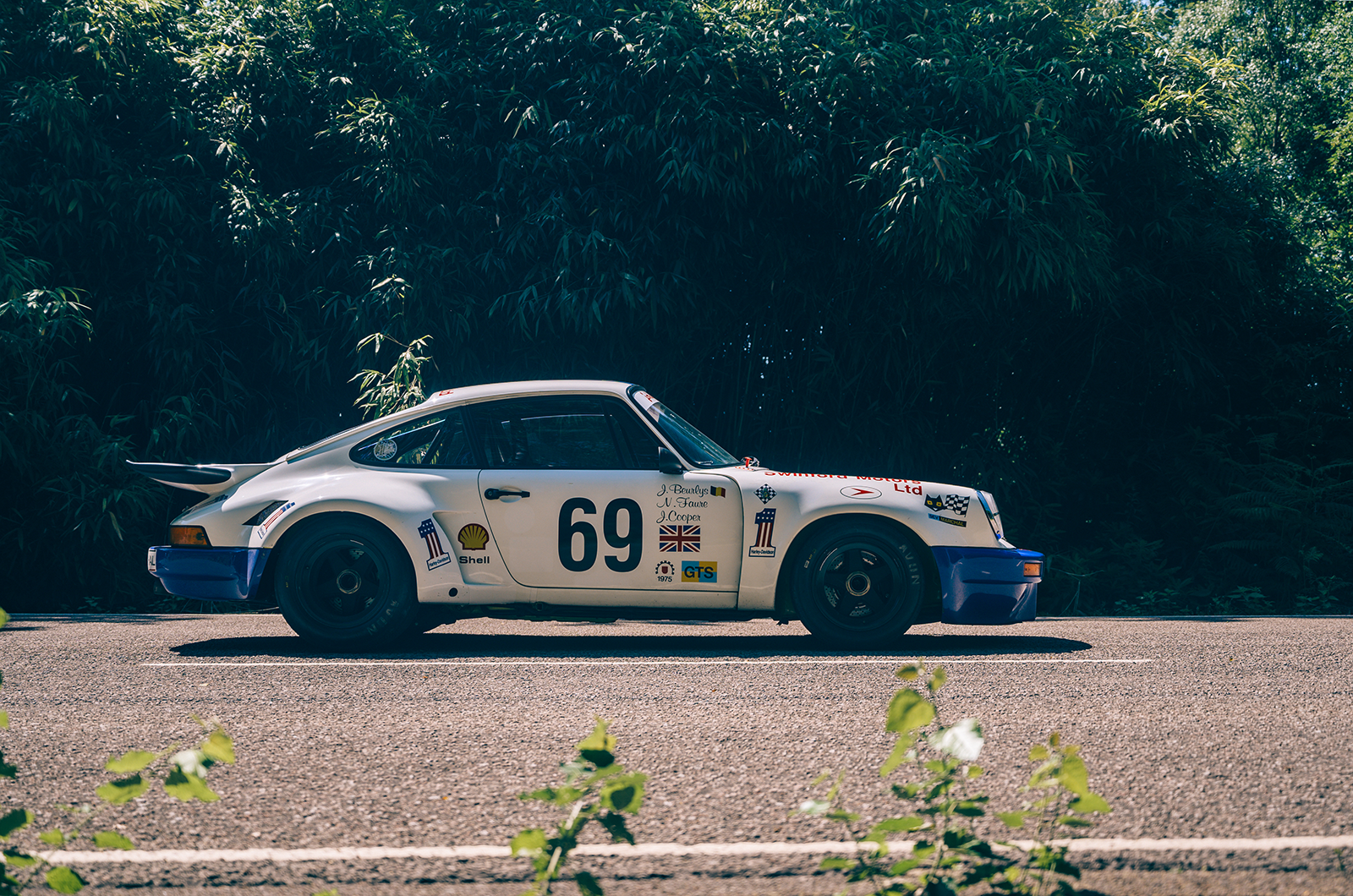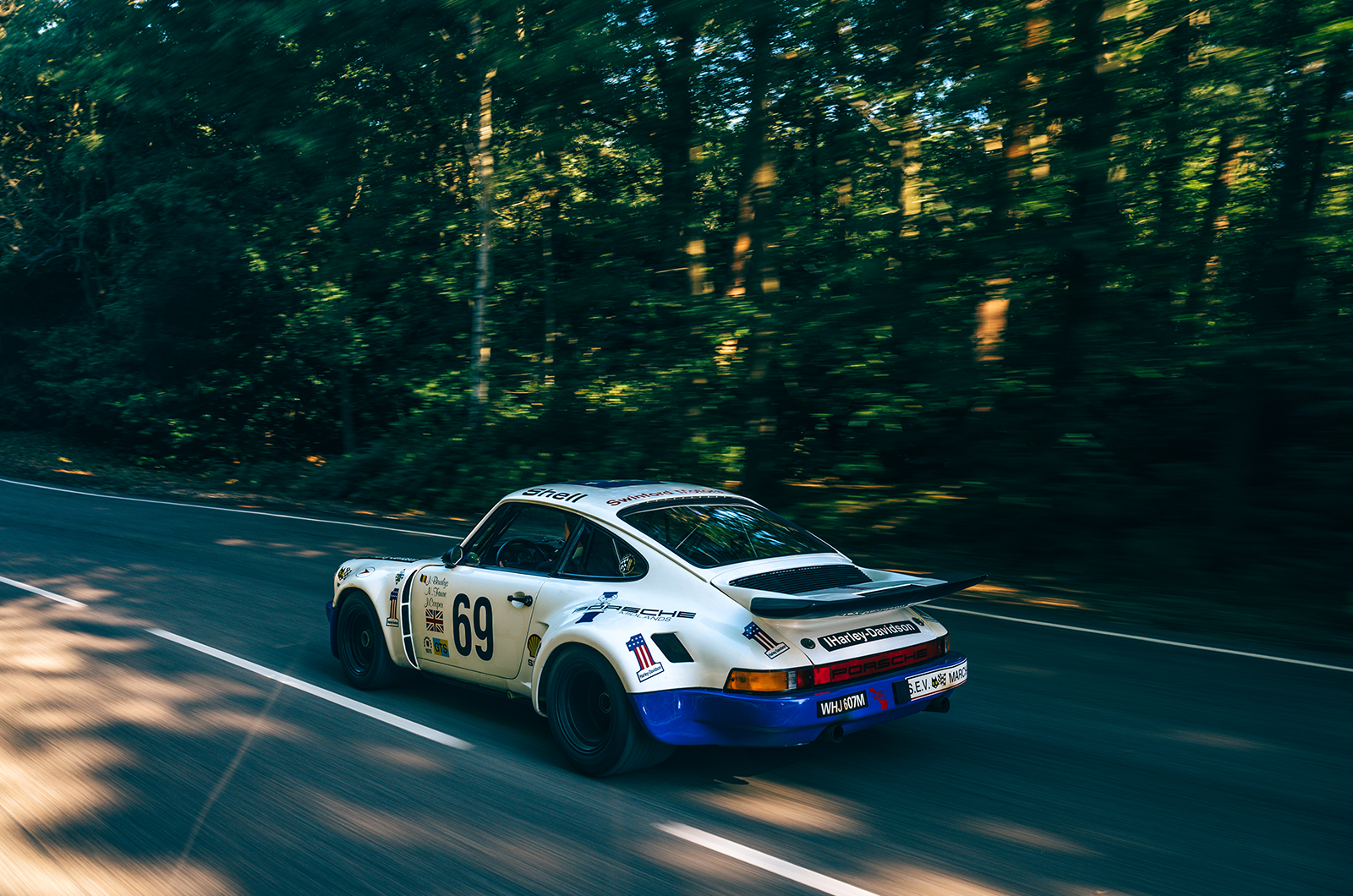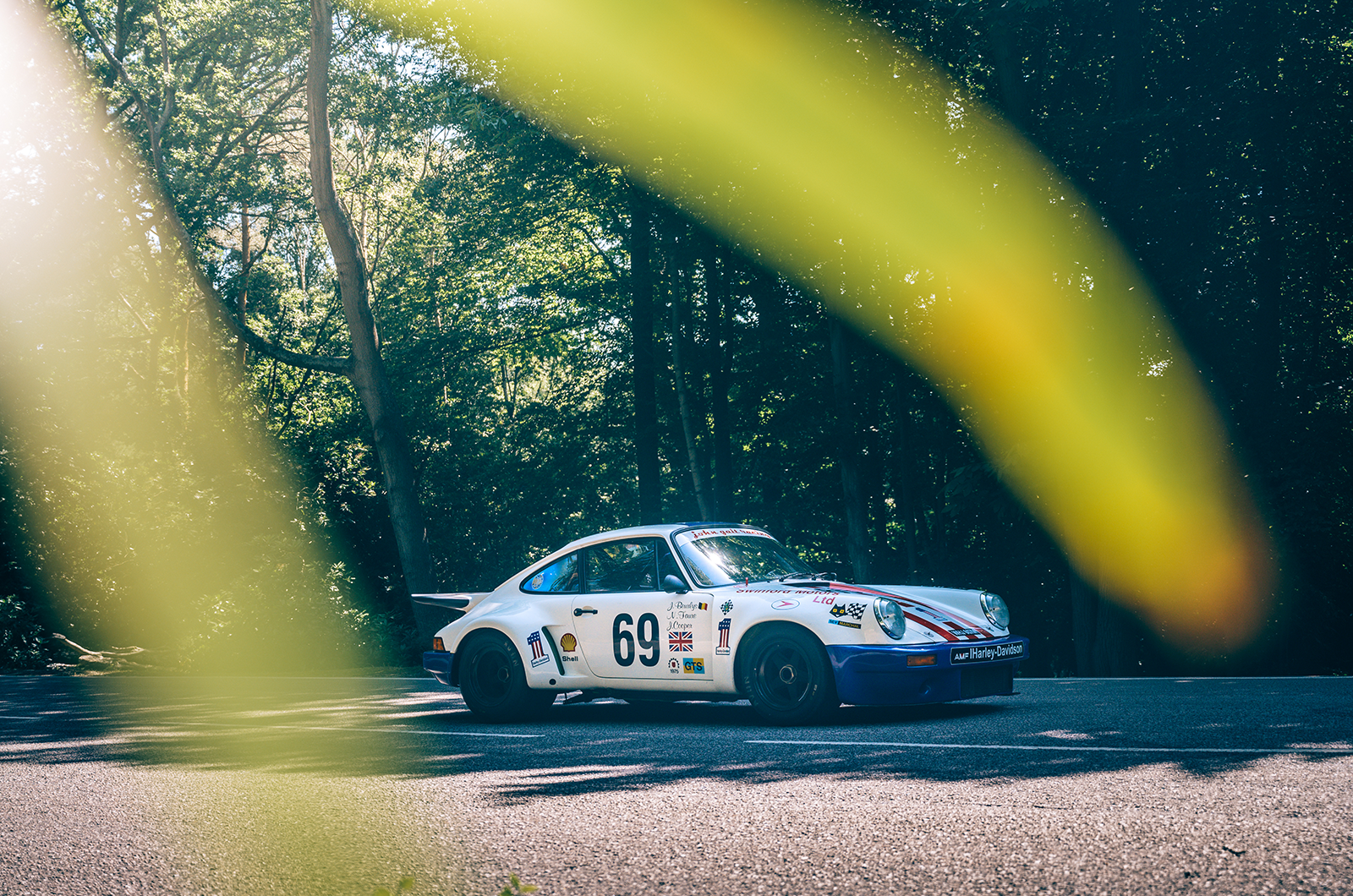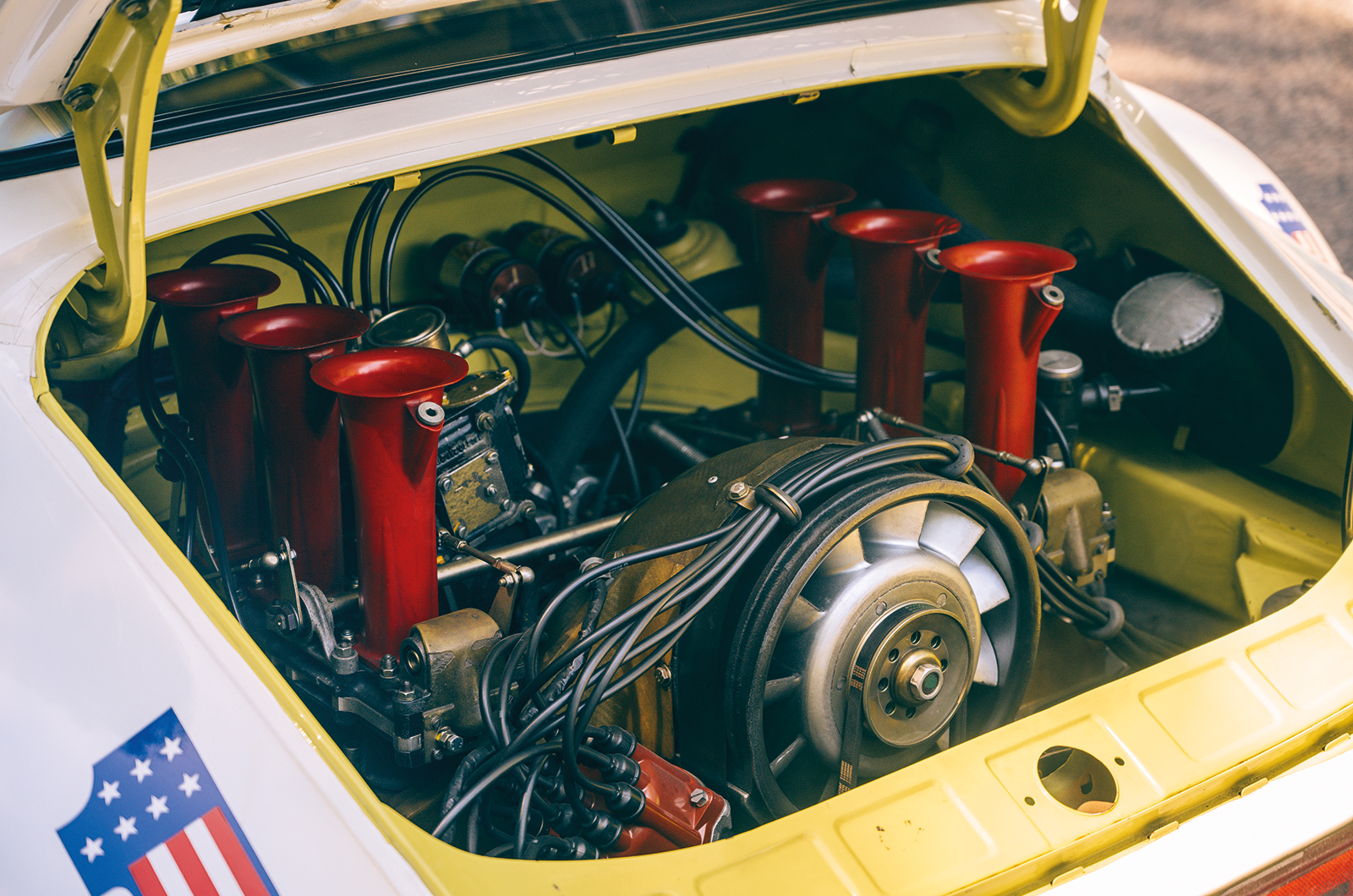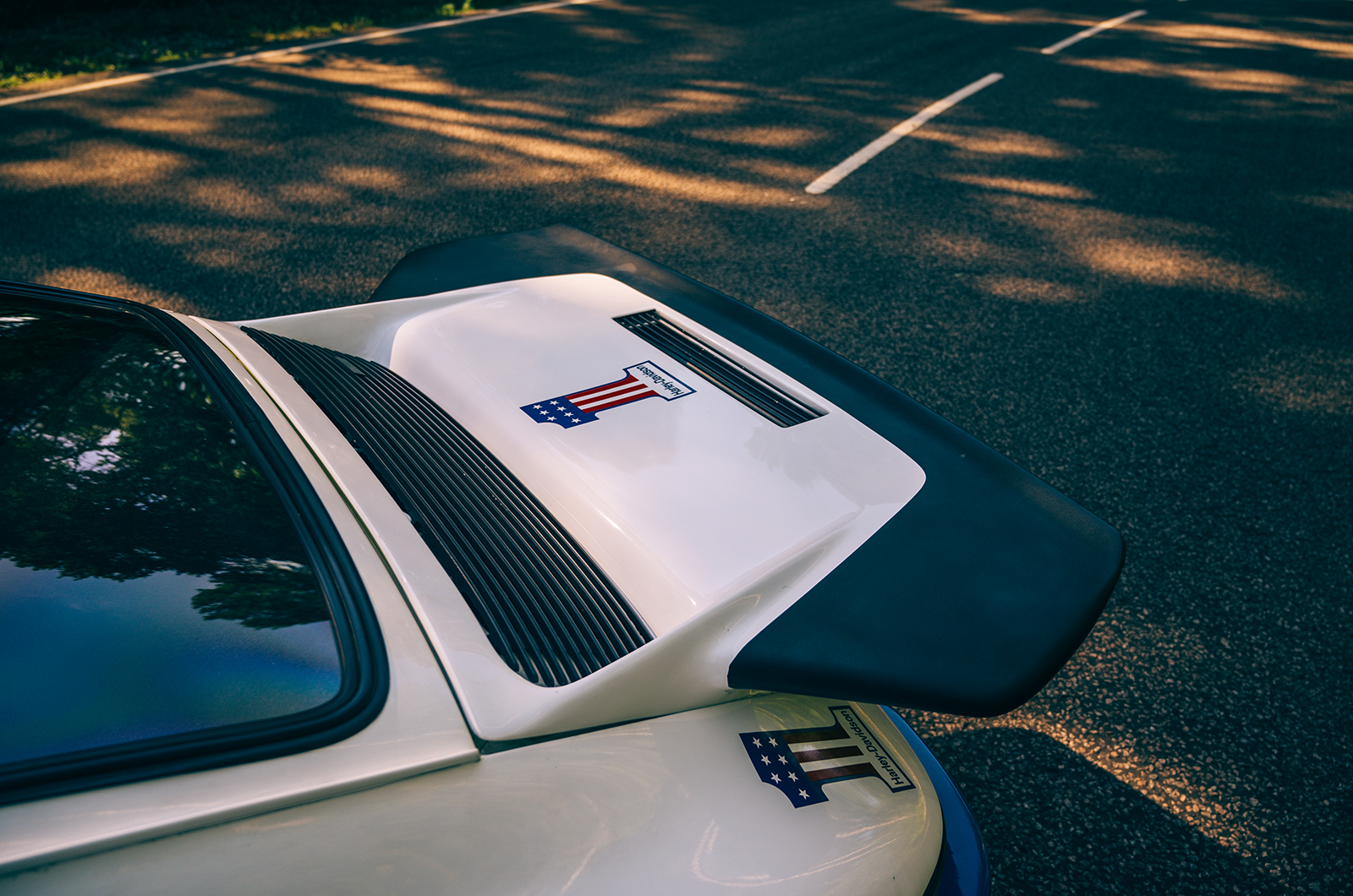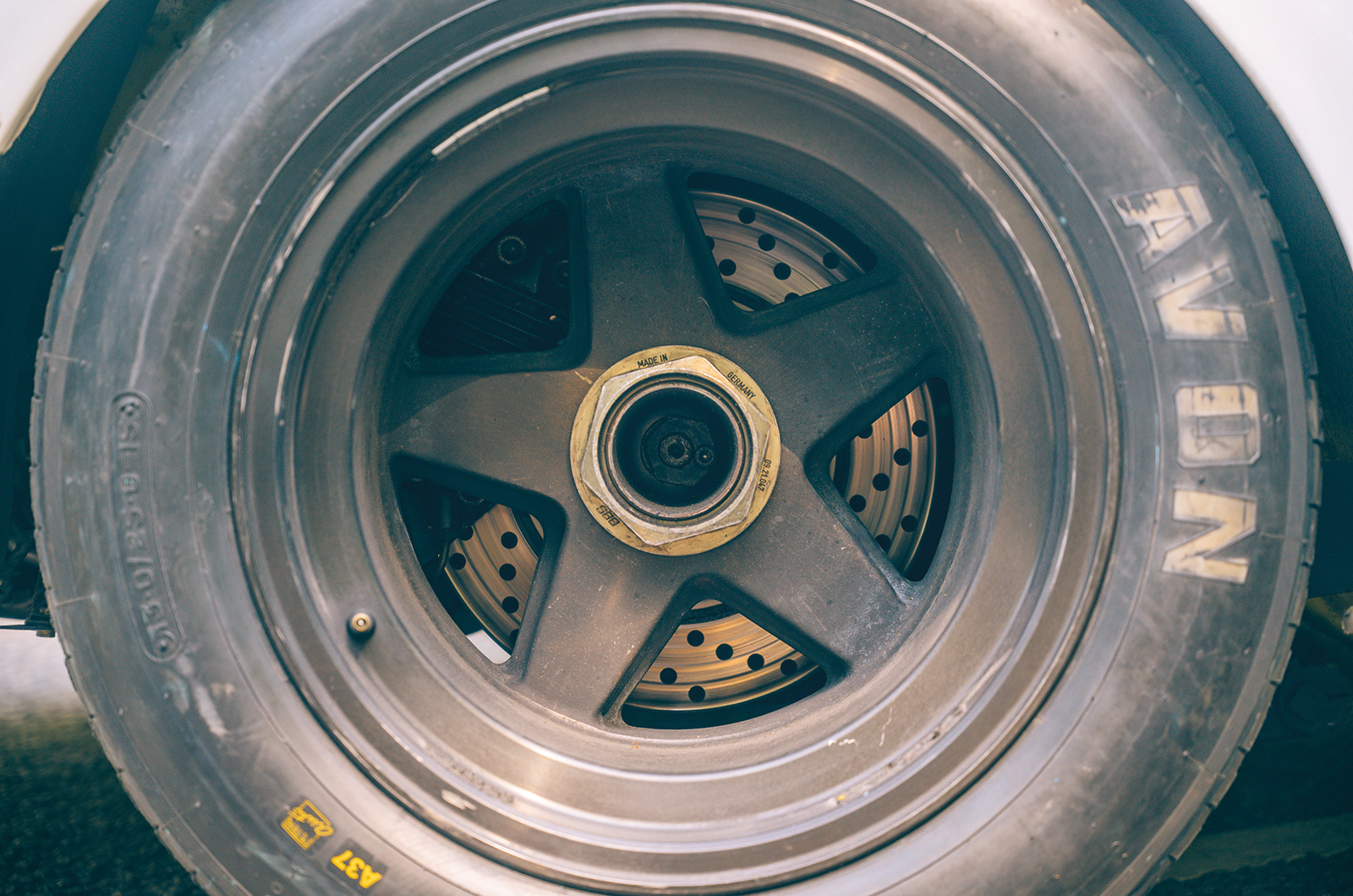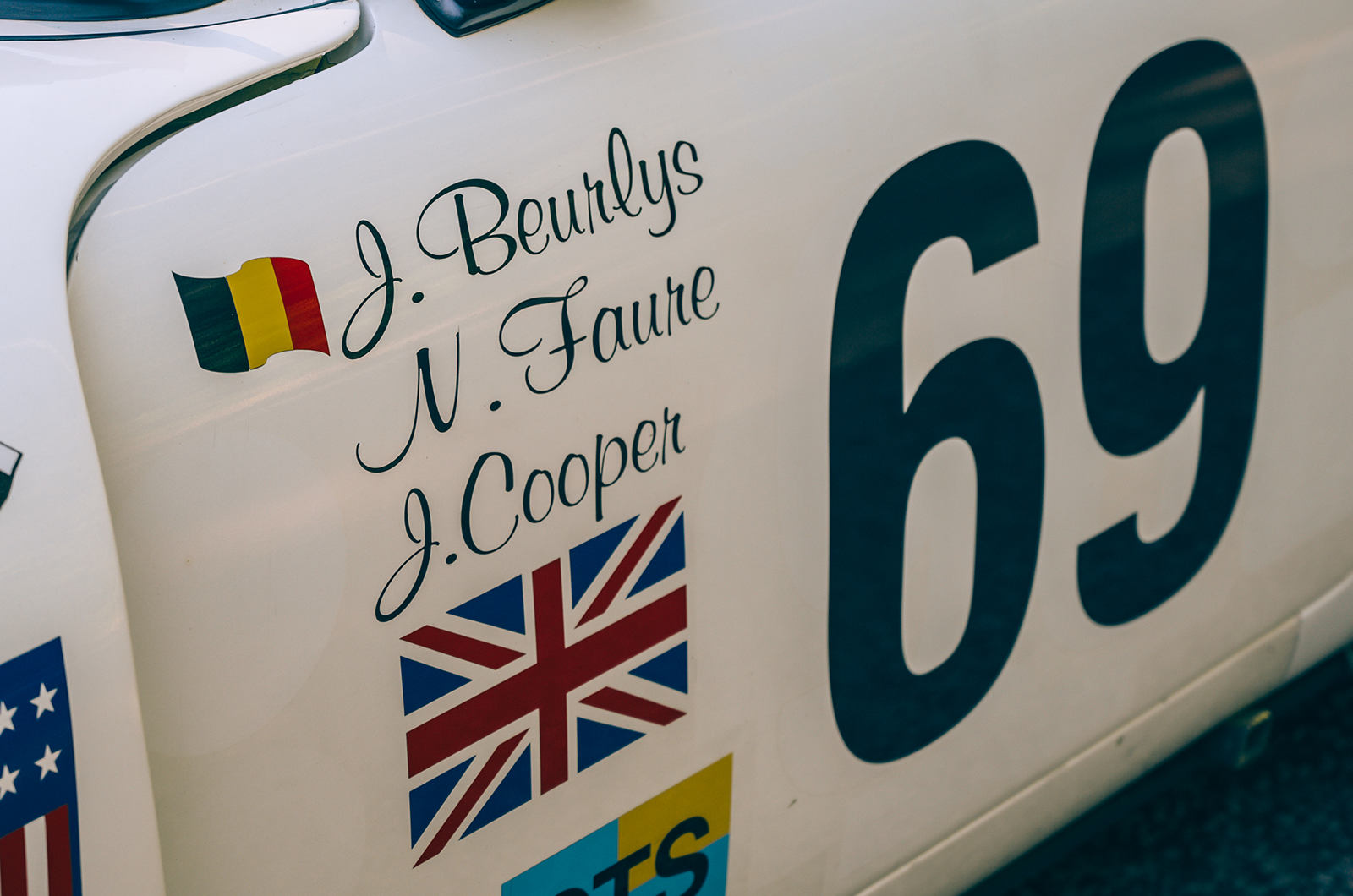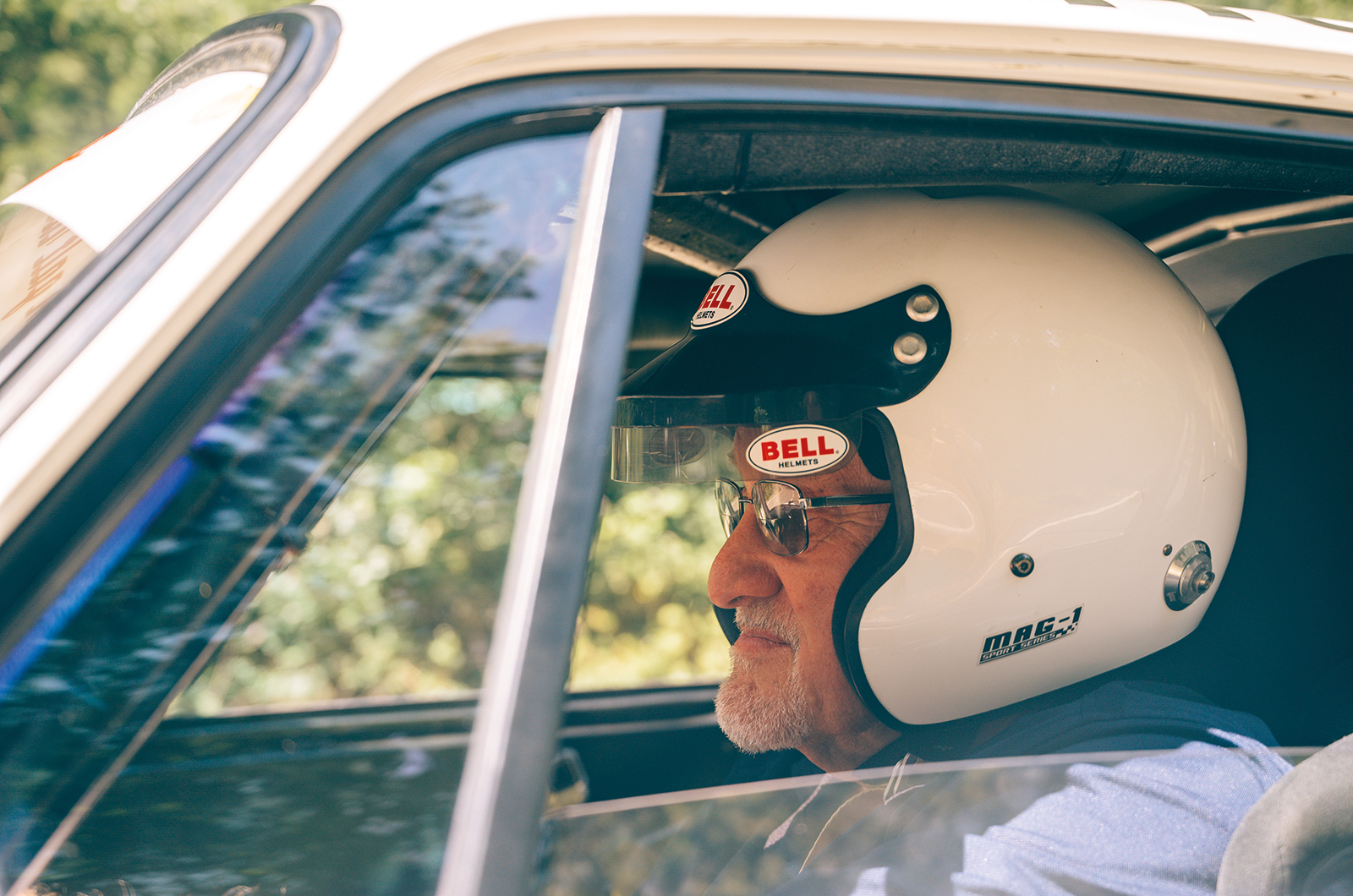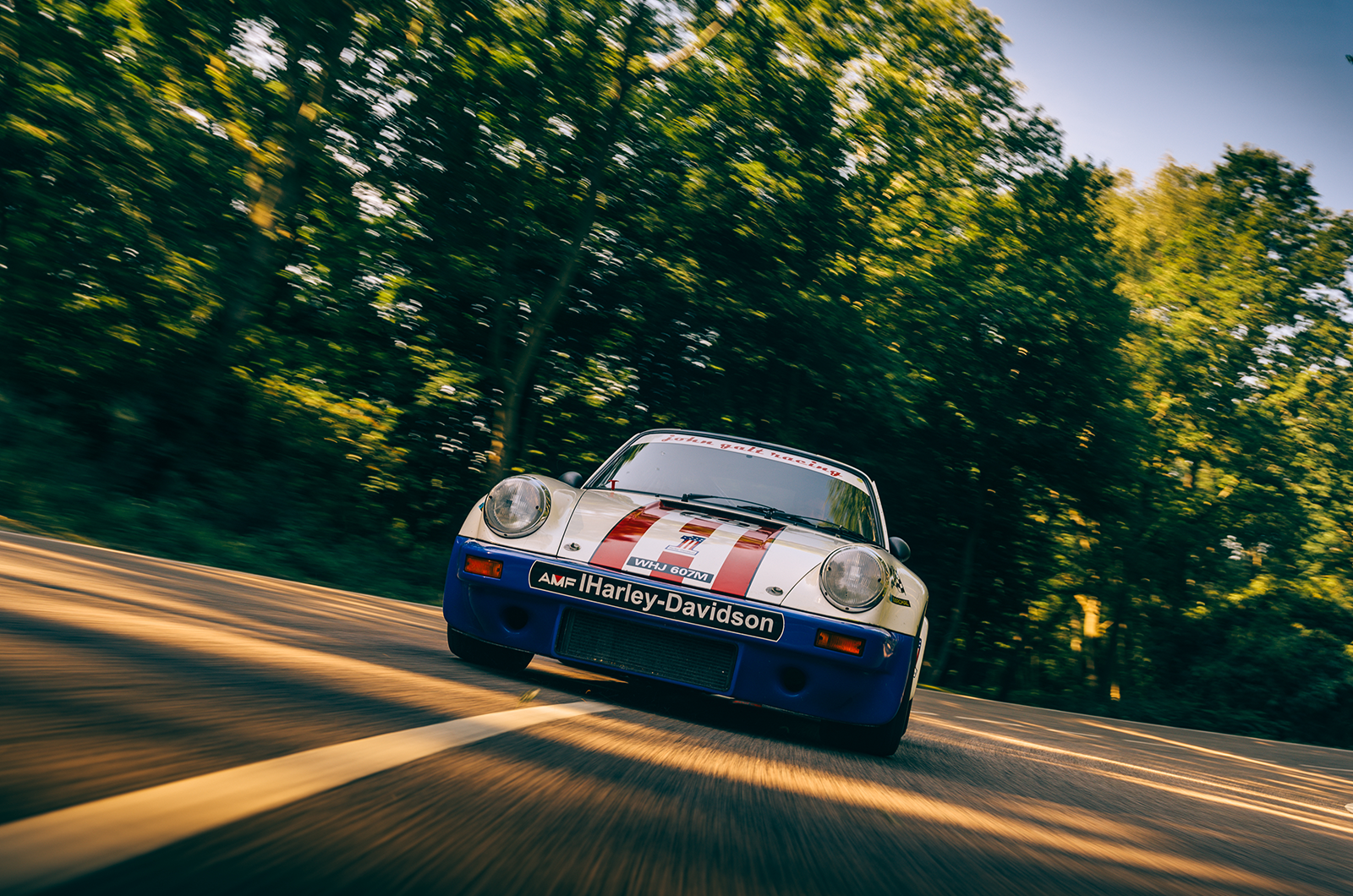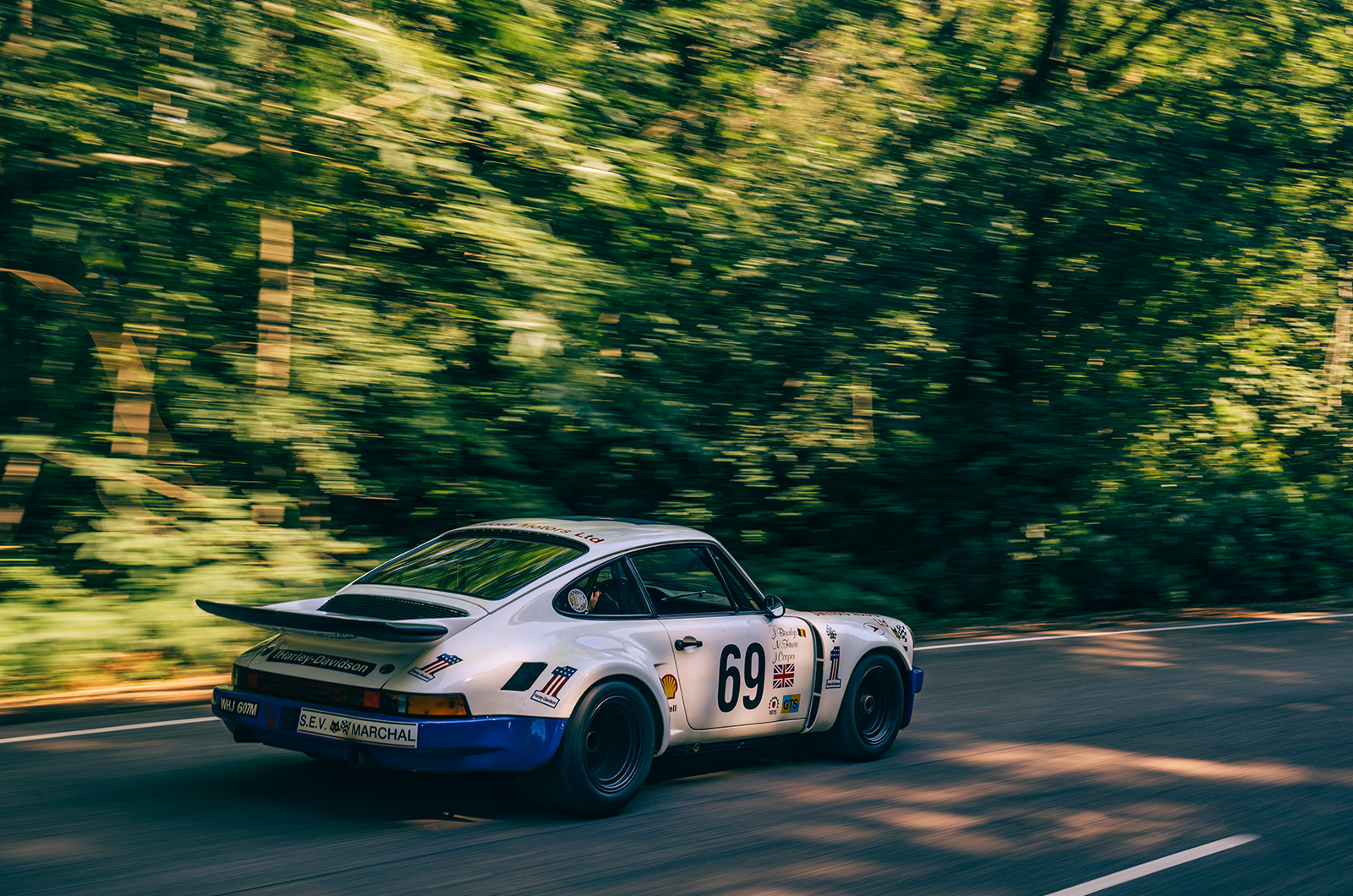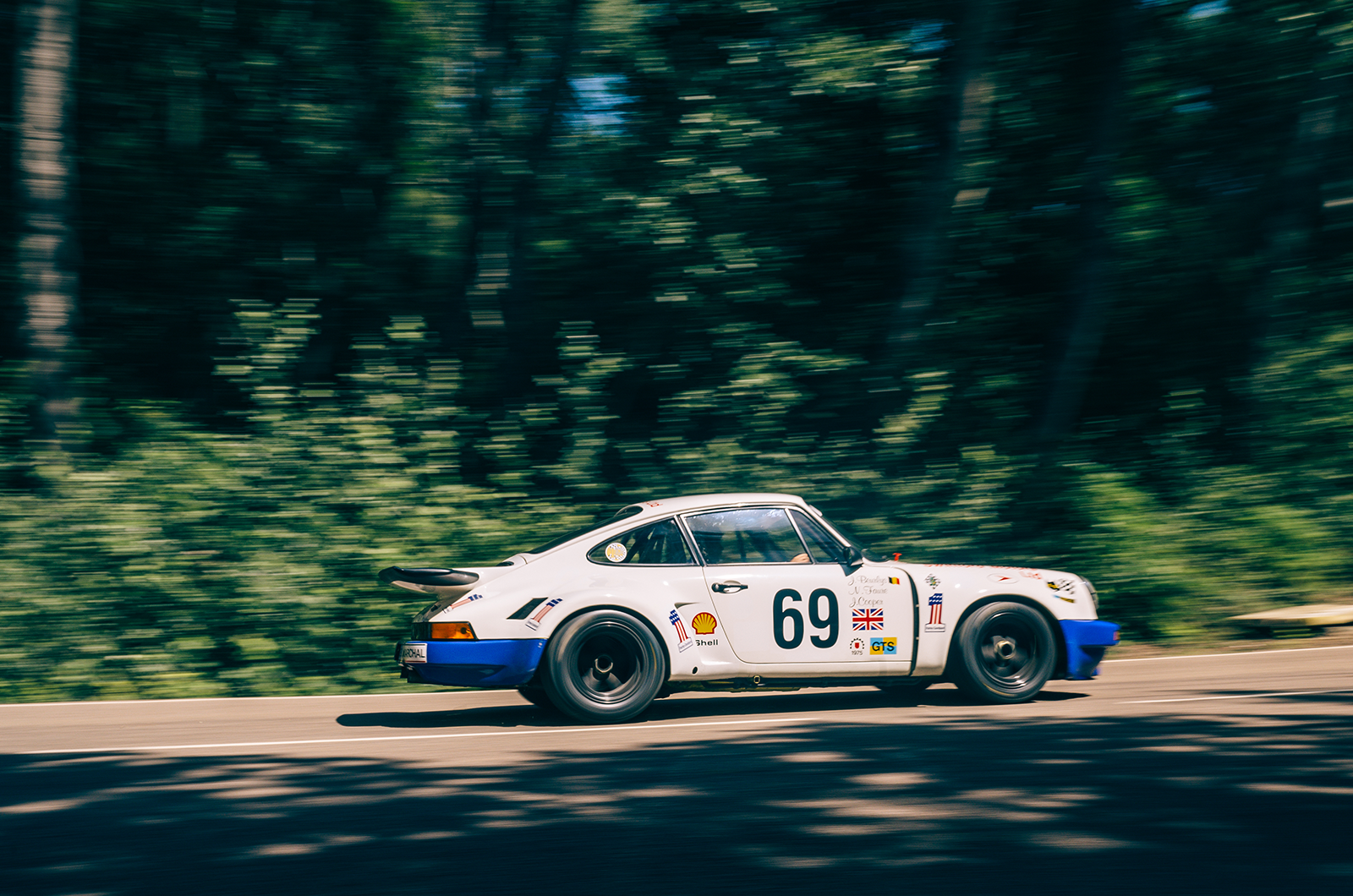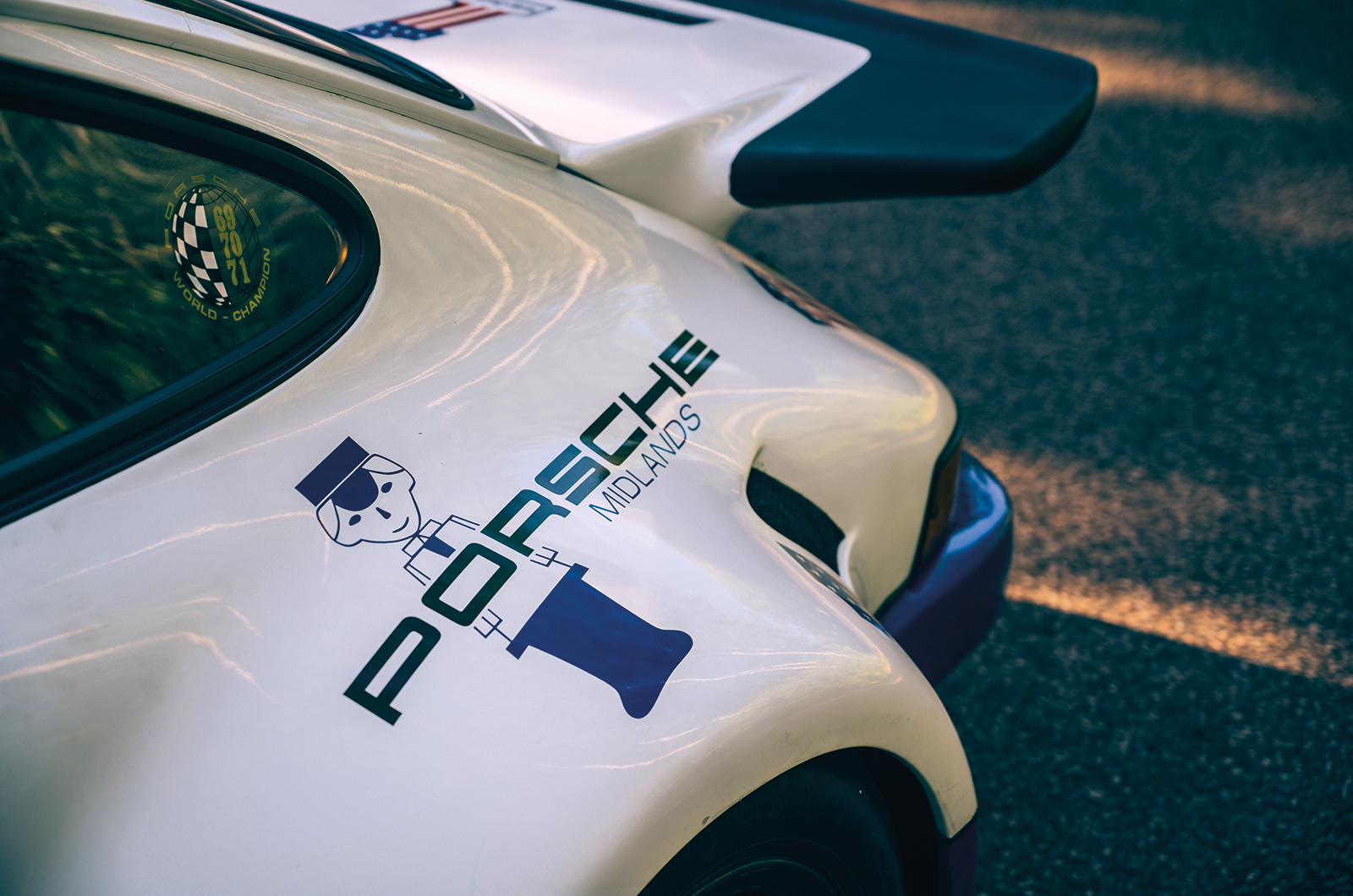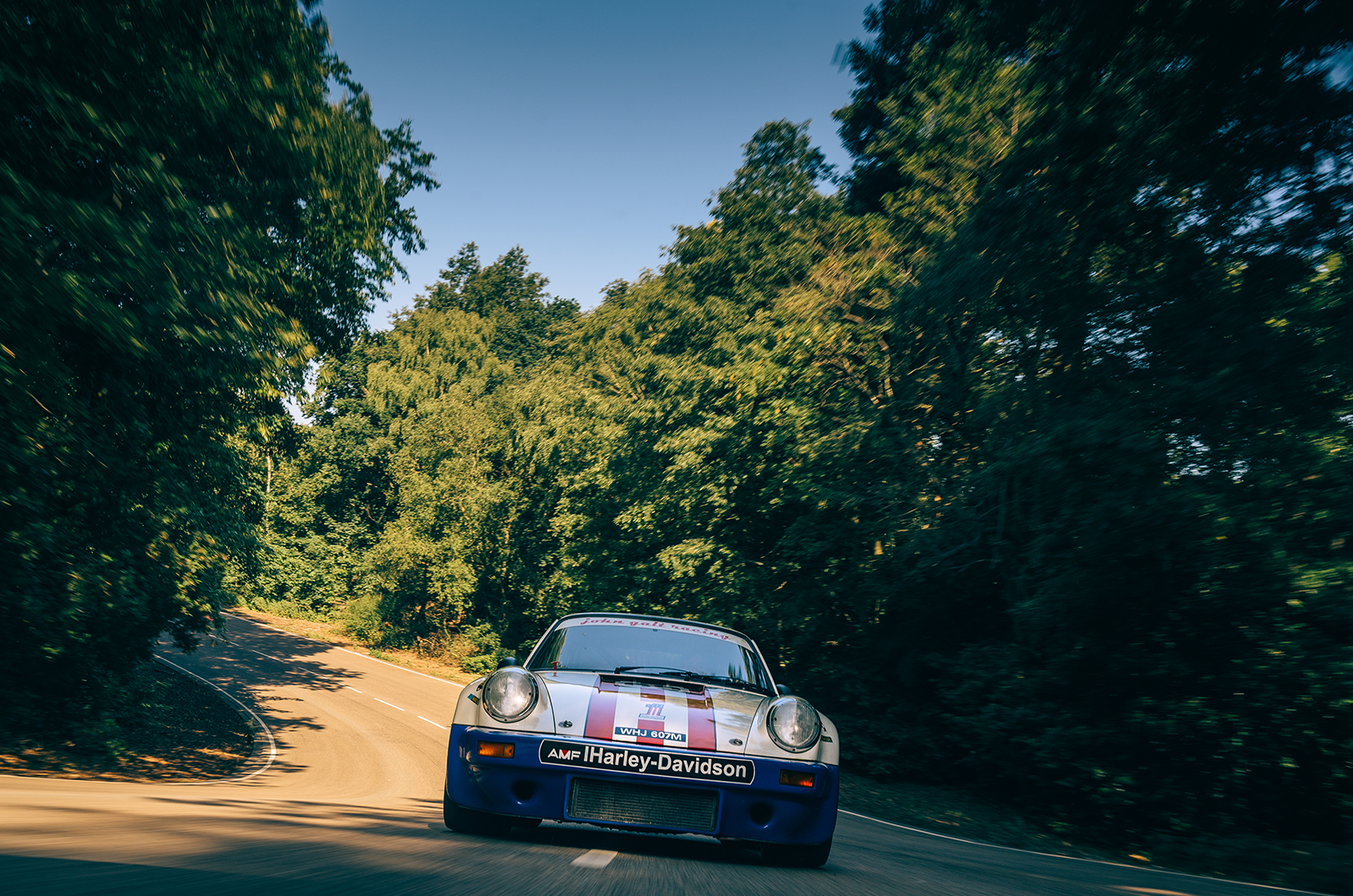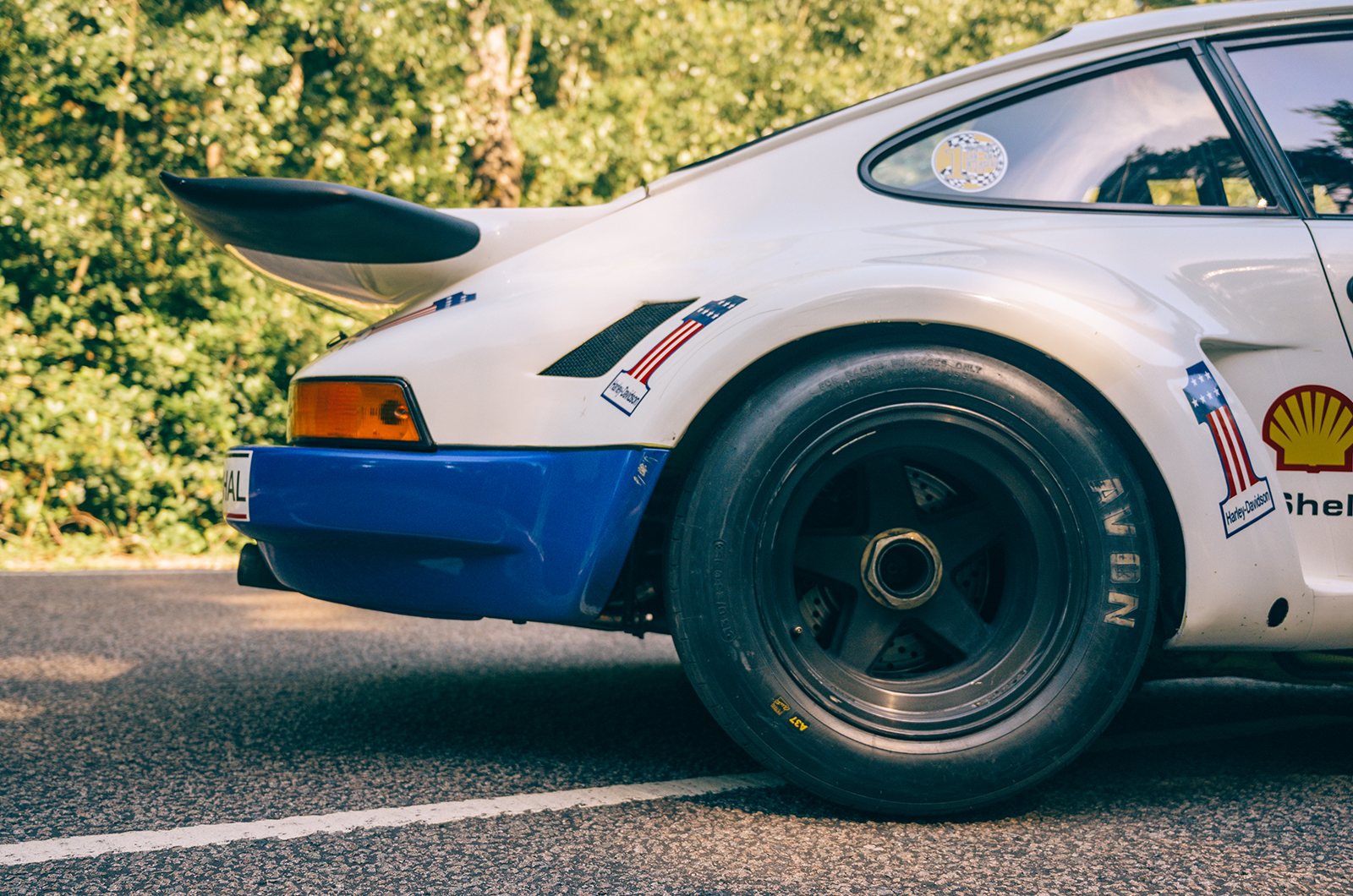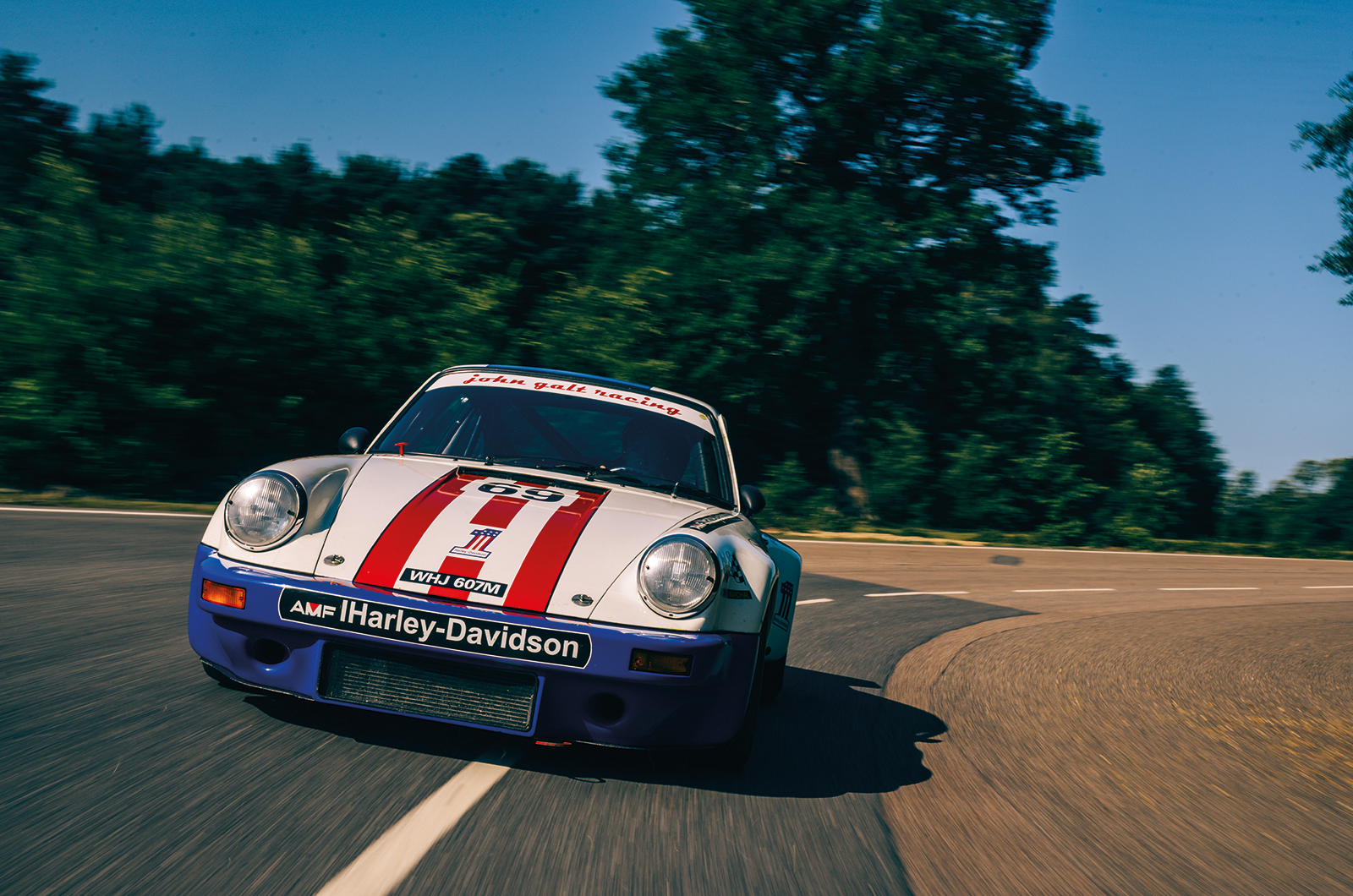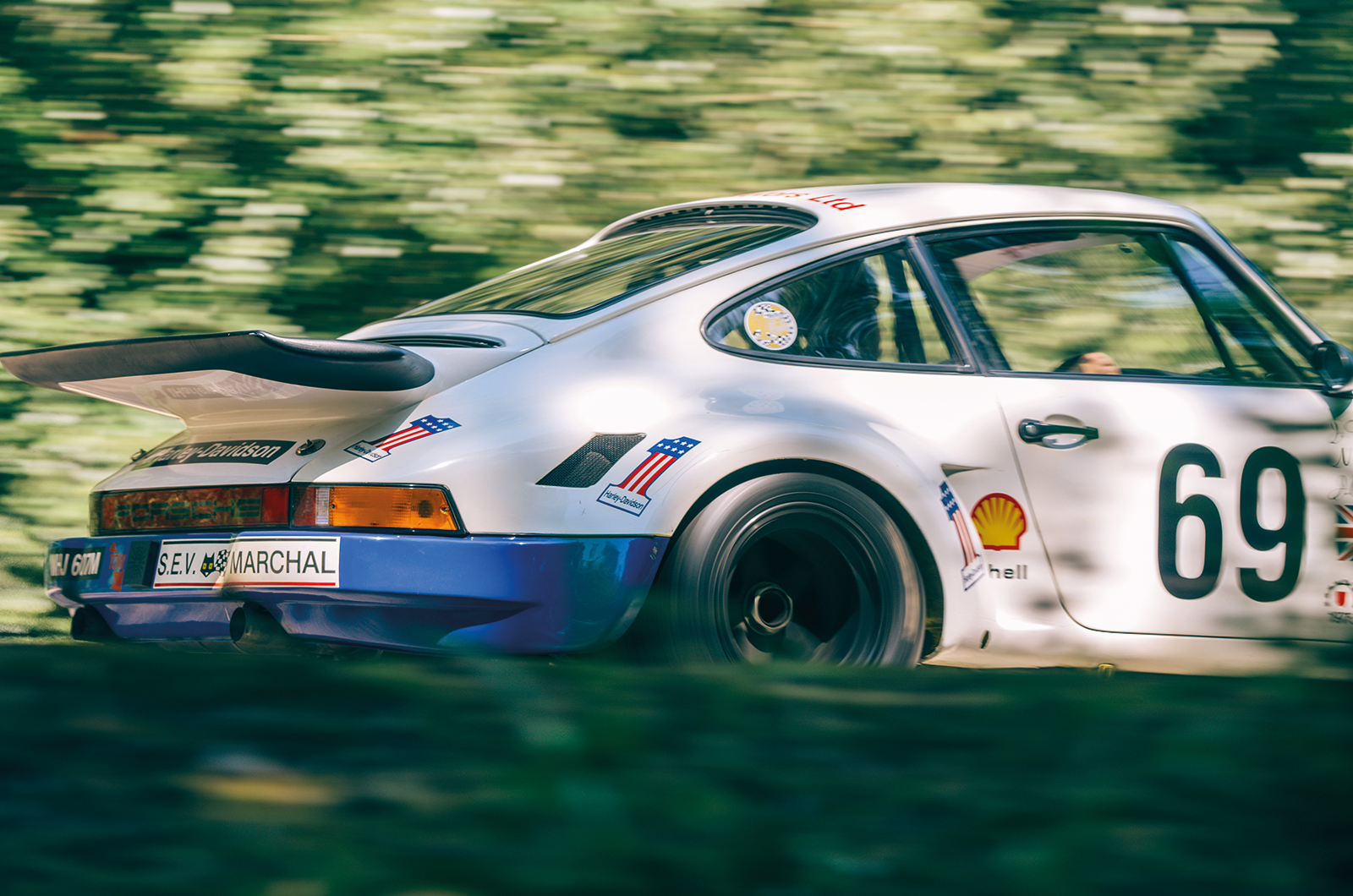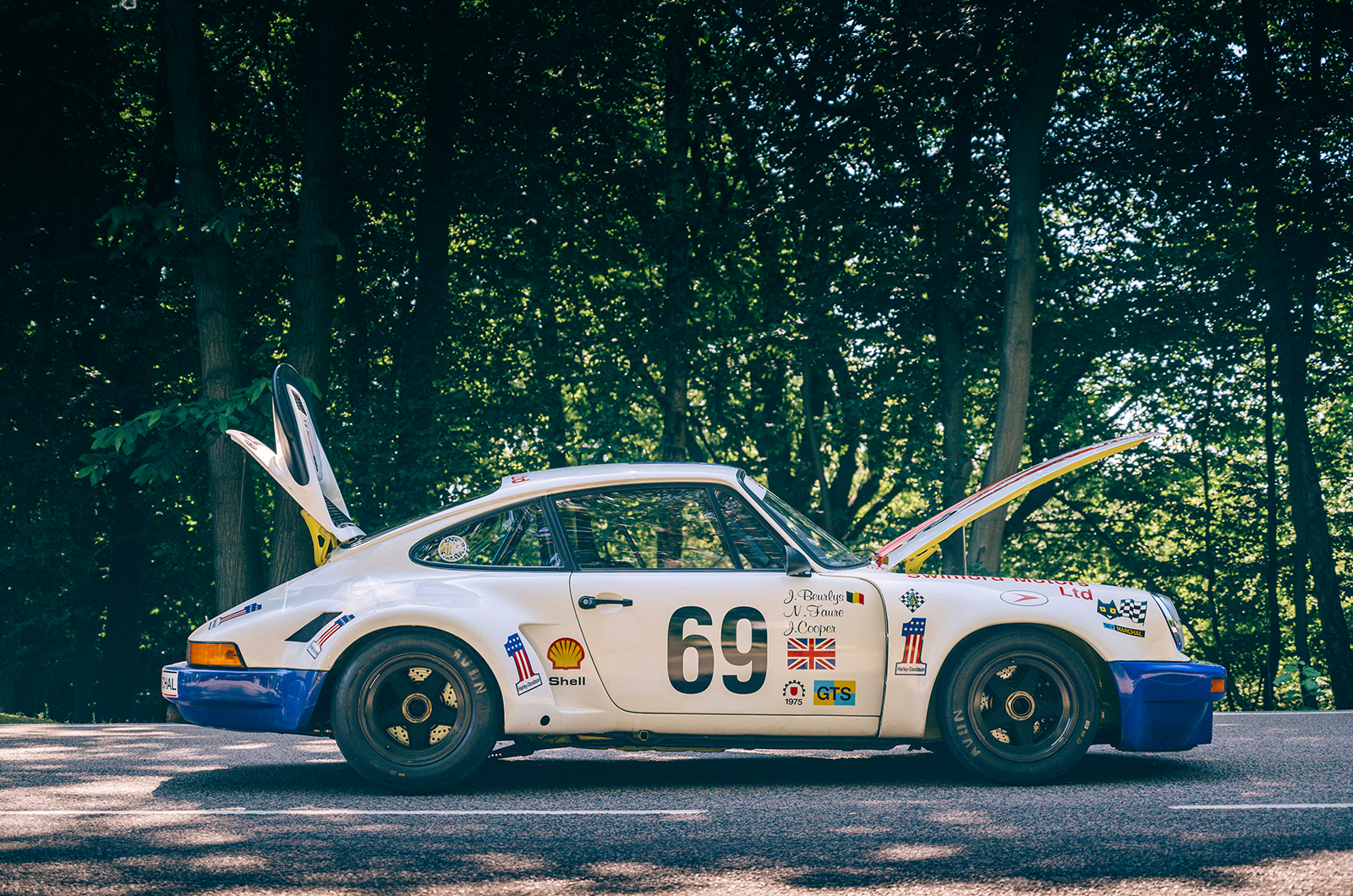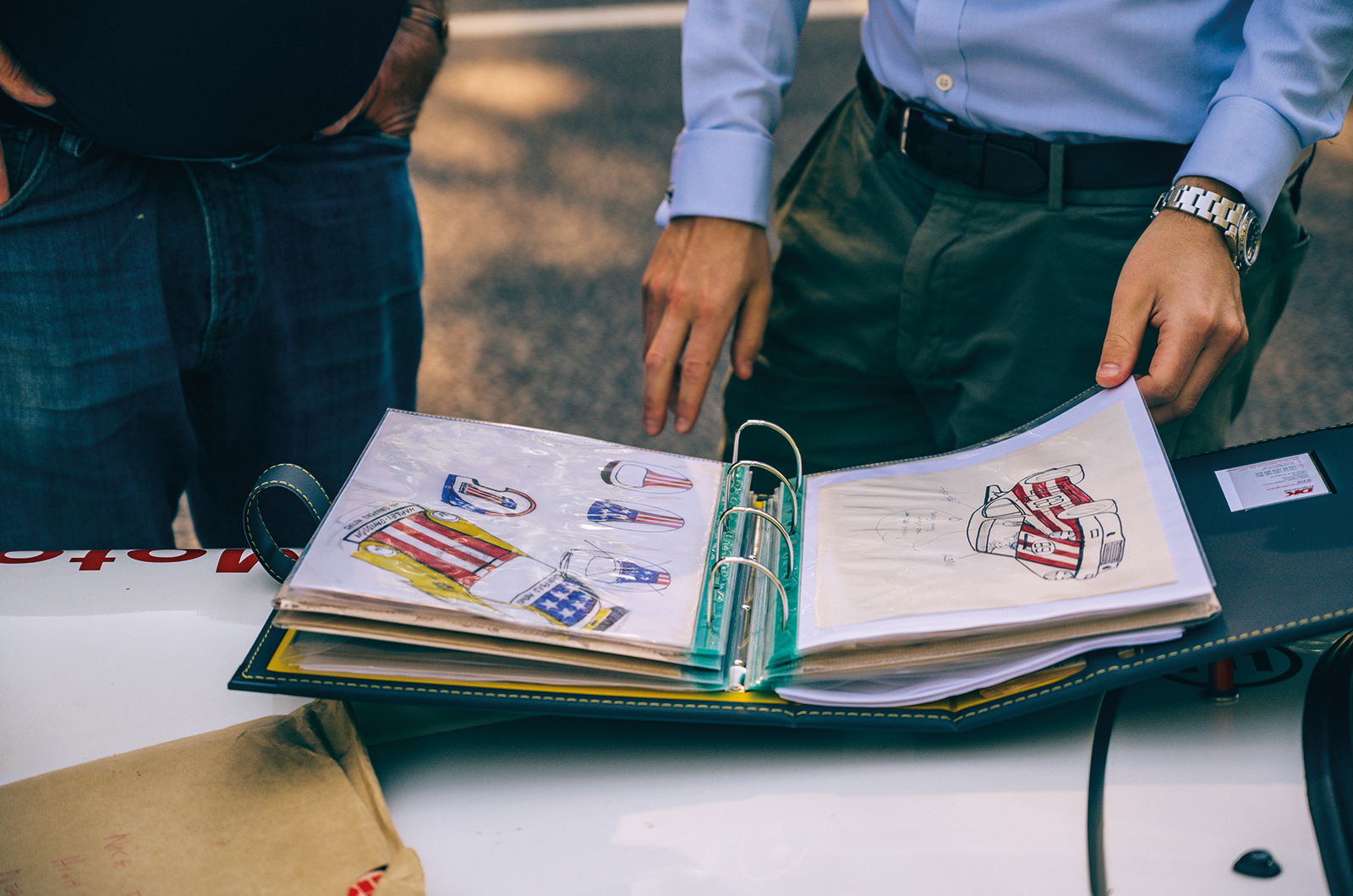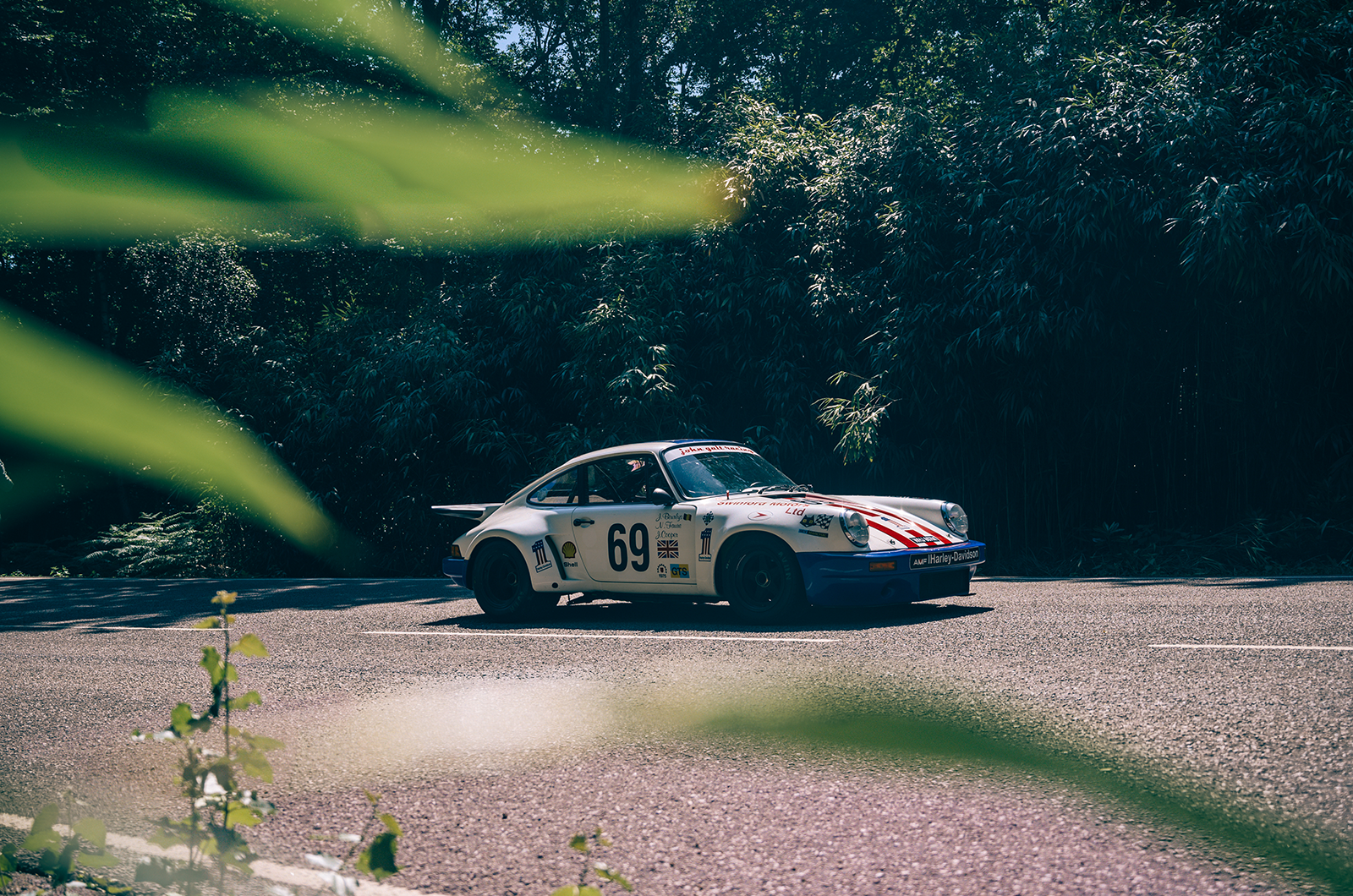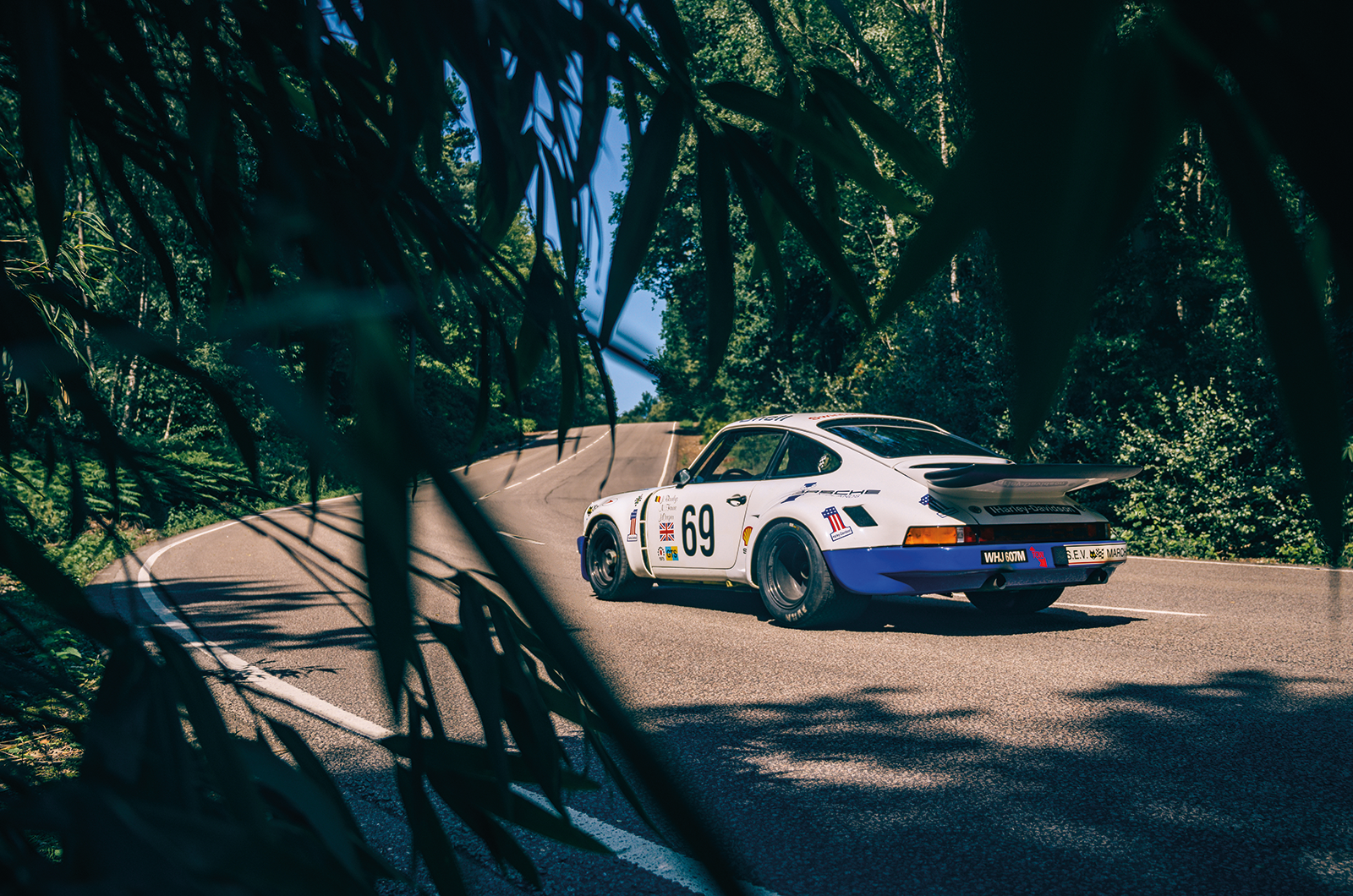Ever the Porsche fanatic, Blaton was an early adopter of the new model and received his car – finished in the trademark yellow of Ecurie Francorchamps – ahead of the 1974 season, where it ran well at Le Mans before a gearbox problem forced the car’s retirement.
It was this car, chassis 9072 and the 26th of 54 factory examples, that Faure, Blaton and Cooper had to ready for its second outing at La Sarthe.
With the big race just days away, Faure set about transforming the RSR with the stars-and-stripes Harley-Davidson livery that he and Day had settled on back in England.
“Blaton rented the Shell garage at Arnage, with a workshop at the back,” says Faure, “so we used that as a little studio. We didn’t bother painting the interior. We just wanted the outside to be white, so you can still see it’s yellow inside.
“I then chose the colours and bought my aerosols: Guards Red and a Renault Blue. I brought the cans with me from England and cut out stars to use as stencils on the roof.
“The rest I did by hand including the stripes, which were done using masking tape with an outline in black tape to give it a bit of strength. When they came to pick up the car in the morning they were delighted.”
As well as being new to Le Mans, Faure was a novice when it came to night racing and his first experience of driving in those conditions in anger came during qualifying.
“It was so easy – everyone is going in the same direction, so all you had to look at was red lights. You just dipped your mirror if they had their full lights on; you’re aware of the cars that are coming up really fast because the lights close quite quickly.
“I’ll always remember Vic Elford saying to me, ‘If it’s foggy in the morning, and you come to the rise just before the kink and you’re going flat-out, don’t slow down. Just count one, two, and turn as soon as you go over the rise and you’ll find the apex.’ It worked; don’t lift.”
It might not have been a golden year for Le Mans, 1975, with stringent new fuel-economy rules keeping away the likes of Ferrari and Alfa Romeo, but it was certainly a purple patch for Porsche.
More than half of the grid was filled with 911s, including several privateers fielding RSs and RSRs as well as a number of big-money teams such as Kremer and Jägermeister.
By the time the chequer fell on Sunday afternoon it was Jacky Ickx and Derek Bell in their Gulf-Mirage GR8 who led the pack, followed by the Ligier of Jean-Louis Lafosse and Guy Chasseuil, the sister GR8 and the Joest Porsche 908/3.
Showing their pace and reliability, the following seven places were locked out by RSRs and RSs, with the Gelo car leading the class ahead of the Beurlys RSR, which was brought home in the final hours second in class and sixth overall – a full 22 laps ahead of the closest privateer.
“I drove the car for the last stint, between midday and 4pm, just one minute short of my allowance,” remembers Faure.
“The RSR just ran and ran and we were in the pits for only 20 minutes in the 24 hours, almost a record. We didn’t even change tyres!”
“In those days the concrete pit balconies were directly above the track and the pitlane. You were very aware that everyone was looking straight down on you – you felt like a matador in the bullring.
“After the race everyone crowded on to the circuit, the whole team and the Harley boys with their ’bikes. Everybody was thrilled – they never expected to finish like that.”
At the season’s close, Blaton offered the car to Faure for £3600 but, not having the funds, it was sold to a syndicate and made its way to South America.
The 911 appeared in Ecuador, where it stayed for four years before being repatriated to Germany and going into a private collection for 25 years.
The Porsche was restored in around 2006 by marque specialist Manfred Freisinger to the exact specification in which it contested Le Mans, including the yellow interior.
It remains one of the most original of its type.
Squeezing into the competition bucket seat, you get some sense of what it might have been like back in 1975, and of the RSR’s strange mix of the exotic and familiar.
But any comfort that you may draw from the many similarities it has with more approachable 911 road cars evaporates the instant the 3-litre flat-six clears its throat.
The Type 911/75’s high-lift camshafts offer a lumpy idle that reverberates around the bare cabin; as with most racers it’s happiest on the move.
The Fichtel & Sachs single-plate clutch and ‘9156’ gearbox shared with the 2.8 RSR make a wonderful combination, with a light pedal and smooth action that will feel familiar to anyone who’s driven a 911 of similar vintage.
At low speeds it’s a car that even your grandmother could drive, but begin to explore the envelope of performance and it’s clear the RSR is a very different animal.
Plant the throttle in any gear and the acceleration arrives with the immediacy of a lump-hammer hitting a plate-glass window. It’s seriously quick, with a brutal kick that pins your head to the upright seat.
You very soon appreciate the need for the centrally mounted tachometer, rotated by 90º to afford a necessary at-a-glance view of the 10,000rpm business end.
The RSR is blistering in a straight line, as your strained neck muscles can testify, but it’s in the bends that the car truly excels: the low centre of gravity, wide track and those enormous tyres give you a fresh understanding of mechanical grip.
You could say it corners as if it’s on rails, but the old cliché doesn’t do justice to just how fleet of foot it feels, how alive and responsive the steering remains even under extreme load.
“I think it’s probably one of the best driver’s road/race cars,” reckons Faure. “It certainly develops the greatest feel of any car I’ve driven and it responds to you as if it’s a glove; you wear it.
“The car is basically doing what it wants to do, and you only guide it.”
“It brings back the most fantastic memories,” continues Faure, “not just of the car but being with such a congenial team and being able to enjoy the atmosphere of Le Mans, which is really the most special race in the world.
“I think it would be the ambition of any racing driver to drive at Le Mans. To be reacquainted with the car now is just a dream.”
Images: Olgun Kordal
Thanks to DK Engineering
READ MORE
Dream Porsche 911 road trip
The sole surviving Lancia D23
Meet the bespoke E-type racer built for the road
Greg MacLeman
Greg MacLeman is a contributor to and former Features Editor of Classic & Sports Car, and drives a restored and uprated 1974 Triumph 2500TC
